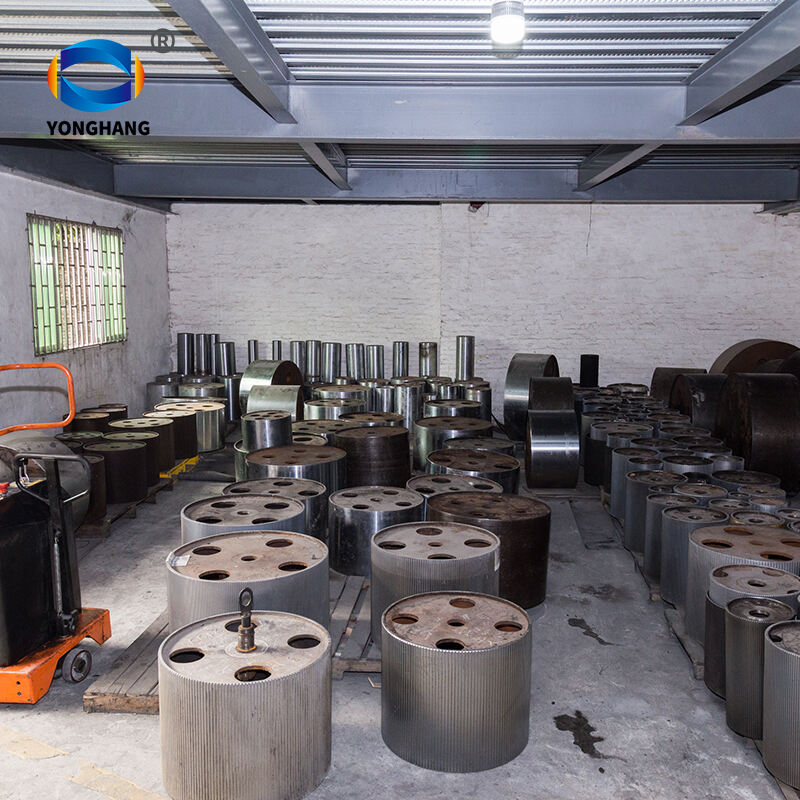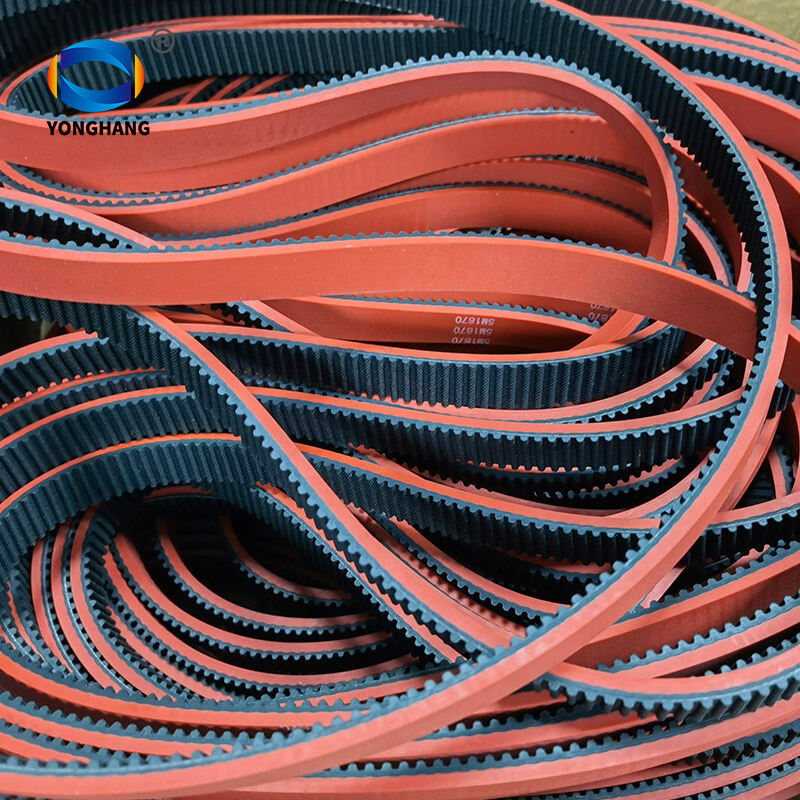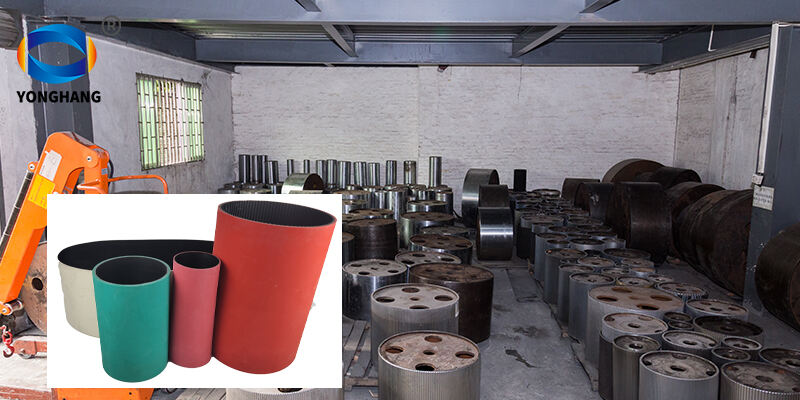Understanding How Coatings Enhance Timing Belt Performance
Why Coating Durability Matters in Industrial Applications
Timing belts in industrial settings face all sorts of harsh conditions including gritty particles, scorching heat, and corrosive chemicals. When these belts get coated properly, they stand a much better chance against early wear that causes those frustrating unexpected shutdowns. Take food processing facilities for instance where regular cleaning with strong alkaline solutions really takes a toll on belt materials. Keeping coatings intact makes all the difference here. Equipment stays running longer between repairs and maintenance bills start looking a whole lot friendlier over time.

How Coatings Improve Resistance to Wear, Temperature, and Chemicals
Modern coatings like polyurethane (PU) and advanced composites address three primary failure modes:
- Abrasion Resistance: PU coatings reduce surface wear by 30-50% compared to uncoated belts in high-friction conveyor systems
- Thermal Stability: Silicone-based formulations maintain flexibility from -40°C to 150°C, making them ideal for automotive timing applications
- Chemical Protection: Oil-resistant coatings prevent swelling in hydraulic machinery, preserving dimensional accuracy and power transmission efficiency
These properties collectively extend service life and support reliable performance under demanding conditions.
Case Study: Extended Service Life of PU-Coated Timing Belts in High-Cycle Molding
A 2023 evaluation of injection molding lines showed PU-coated belts lasting 1.2 million cycles–50% longer than standard rubber variants. The micro-textured surface minimized resin buildup while resisting mold release agents, reducing cleaning frequency and extending replacement intervals by 42%. This improvement translated into fewer production stops and lower operational costs.
Trend: Rising Demand for Advanced Coating Materials in Custom Timing Belts
Manufacturers are increasingly adopting hybrid coatings that combine PTFE’s low friction with nylon’s tensile strength. This innovation meets the needs of aerospace and robotics sectors, where belts must endure UV exposure, grease contamination, and high-speed micro-slippage without compromising precision or durability.

Strategy: Aligning Coating Properties With Application Requirements
Selecting the right coated timing belt requires matching material properties to operational demands:
| Factor | Coating Priority | Example Application |
|---|---|---|
| Chemical Exposure | Oil/acid resistance | Pharmaceutical manufacturing |
| Operating Temperature | Thermal conductivity | Glass tempering lines |
| Surface Interaction | Friction coefficient | Precision printing systems |
This targeted approach prevents over-engineering and helps achieve 18–24 month service life targets in 89% of industrial settings.
Comparing Coating Materials for Industrial Timing Belts
PU vs. Rubber vs. Composite: Flexibility, Resilience, and Performance Trade-Offs
When it comes to high precision work, polyurethane or PU has really taken over because tests show it wears down about 80 something percent less than regular rubber according to those 2024 material compatibility reports. Rubber still holds its own in lighter duty situations where vibration damping matters more, giving roughly 15 to maybe 20 percent better performance there. But what makes PU stand out is how resistant it is to chemicals, which means parts last longer when exposed to oils and solvents cutting down replacements needed by around 40%. For extreme temperatures, some composite options like Kevlar reinforced silicone can handle everything from minus 40 degrees all the way up to 150 Celsius. The downside? These specialized materials typically cost about a quarter more than standard PU products.
Long-Term Cost Implications of Coating Material Selection
Even though they cost about 18% more at first glance, PU coated timing belts actually save money in the long run. According to research published in the Industrial Drive Systems Journal last year, these belts cut down overall ownership expenses by roughly 31% within five years. Sure, rubber belts might look cheaper when buying them fresh off the shelf, but this advantage disappears around 18 to 24 months later because they need replacing so much more often – basically three times as frequently as their PU counterparts. Manufacturers running lighter duty operations under 500 cycles per hour find that mixing rubber and PU coatings works best for them. These hybrid solutions slash maintenance bills by nearly $4,200 each year on average across production lines, all while still ticking the boxes for those important ISO 9563 torque requirements.
Core-Substrate Compatibility: Integrating Strength With Surface Protection
When it comes to early belt failures, mismatched coatings and core materials are responsible for around 72% of cases according to research from the Material Science Institute. Packaging equipment often relies on steel reinforced PU belts that can take tensile loads up to 50kN, whereas Kevlar composite versions tend to hold together better when exposed to moisture rich conditions where regular belts might start peeling apart. Most manufacturers these days run their products through rigorous testing protocols including those dreaded 96 hour salt spray tests plus thousands of cycles under torsion stress as required by the ASTM F2523-18 guidelines. These tests help catch potential problems before they become expensive headaches down the production line.
Customizing Coating Timing Belts for Precision Manufacturing Needs
Meeting Diverse Process Requirements Across Automated Production Lines
The belts on modern automated production lines need special treatment when it comes to automotive assembly and food processing operations. Most engineers we talked to put custom coatings at the top of their list for reducing those pesky alignment issues on fast moving conveyors. A recent industry poll from 2024 showed about 7 out of 10 professionals agree with this approach. For handling delicate parts without slippage, PU coatings with textured surfaces work wonders. Meanwhile, belts backed with fluoroelastomers stand up better against oil breakdown problems in robotic arm applications. These specialized materials help maintain reliable performance even when environmental conditions fluctuate throughout the day.

Engineering Custom Belts for 8000+ Mold Variations and Tight Tolerances
Precision manufacturing often involves thousands of unique molds with tolerances under ±50 microns. Custom-coated timing belts meet these demands through engineered layering:
- Dual-layer coatings: PTFE for low friction + nylon for abrasion resistance
- Precision-molded teeth optimized for <0.1° angular deflection
- Hydrophobic surface treatments to prevent moisture-induced elongation
One automotive supplier achieved 98% mold compatibility across 8,200 variations using this integrated design, significantly improving production throughput.
From Design to Deployment: Ensuring Consistency in Custom Coating Application
Getting good customization right relies heavily on keeping quality checks tight throughout production. Top manufacturers have started implementing automated spray systems that keep coating thickness variations below 5%, often combining these with thermal imaging tech to spot any issues during the curing process. After everything comes out of the factory, there's rigorous testing that mimics around 2,000 hours straight of belt operation. These tests show the belts stretch less than 0.3% when subjected to 40 Newtons per millimeter load conditions. The whole package of these quality measures cuts down early failures by about two thirds when compared with standard off the shelf options according to last year's Industrial Belt Performance Report.
Environmental and Operational Factors in Coating Selection
Temperature fluctuations and their impact on coating integrity
Polymer materials degrade about three times faster when exposed to extreme temperatures ranging from minus 40 degrees Celsius all the way up to 120 degrees Celsius according to recent research published last year. Throw some moisture into the mix and those temperature swings really start to break down how coatings stick together. That's why engineers are turning to advanced composite materials these days. These newer options maintain around 90 percent of their original bonding power even after going through more than a thousand heating and cooling cycles. This kind of durability makes them ideal for applications where conditions constantly change throughout the day.
Chemical exposure resistance: Choosing backing and coating for harsh environments
Polyurethane coated belts tend to outlast rubber ones by around 40% in chemical processing applications where they come into contact with oils and solvents. When dealing with really acidic conditions below pH 3, fluoropolymer coatings make a big difference too. Testing shows these treatments cut down on chemical seepage nearly three times over standard materials according to those ASTM G154 tests we all know about. Getting the right combination between what's underneath and the surface layer matters a lot for long term results. This attention to detail helps prevent problems like metal degradation from inside out or bubbles forming in the protective layer over time.
Load dynamics and real-world stress testing of coated timing belts
To validate durability, manufacturers simulate real-world load conditions–including bottling line impacts and automotive timing forces–using multi-axis stress rigs. Modern 200-hour endurance protocols verify that coated belts withstand ≥5 million cycles without edge delamination or fiber separation, providing confidence in field performance.
The Role of Manufacturer Expertise in Reliable Custom Solutions
Precision Engineering Behind High-Volume Mold Compatibility (8000+ Molds)
Supporting over 8,000 mold variations requires balancing coating flexibility with structural stability. Manufacturers using FEA (Finite Element Analysis) and deep materials expertise limit thickness variances to ≤0.2 mm, preventing misalignment in high-speed packaging lines. Even a 0.5 mm deviation can trigger $740k in annual downtime (Ponemon 2023), underscoring the need for precision.
As highlighted in industry reports on customized manufacturing solutions, experienced firms leverage 15+ years of application data to optimize belts for:
- Heat dissipation during 120–180°C molding cycles
- Resistance to IPA, acetone, and hydraulic fluids
- Dynamic load capacity up to 8 kN without delamination
Why Manufacturer Experience Ensures Long-Term Reliability
Experienced manufacturers cut down on problems after installation by about 37% when they follow standard procedures. These include keeping temperatures within a narrow range during curing (around plus or minus 2 degrees Celsius) and doing thorough quality checks after applying coatings. What makes these experts stand out is their deep understanding of how polymers work. They know exactly how to get coatings to stick properly to materials like aramid fibers. This matters because mismatched materials can actually reduce performance by nearly 20%, according to findings from the Industrial Belt Performance Review published last year. Getting these details right isn't just about meeting specs it's about making sure everything works together smoothly in real world conditions.
Firms with over a decade in custom solutions also deploy predictive maintenance algorithms, extending mean time between failures (MTBF) to 14,000–18,000 hours in CNC environments. This depth of operational insight translates into 18% lower lifetime maintenance costs versus generic belt alternatives.
FAQs
What are the benefits of coating timing belts?
Coating timing belts improve resistance to wear, temperature fluctuations, and chemicals, extending their service life and reliability in demanding conditions.
Which coating materials are commonly used for timing belts?
Commonly used coating materials include polyurethane (PU), silicone, composite materials like Kevlar reinforced silicone, and fluoropolymer coatings for chemical resistance.
How does customization of timing belts impact their performance?
Customization involves selecting appropriate coatings according to specific operational demands, ensuring alignment issues are minimized, and enhancing durability and efficiency.
Why is manufacturer experience important in coating application?
Experienced manufacturers ensure coating consistency, follow rigorous procedures, and integrate predictive maintenance to prolong durability and reduce costs.
Table of Contents
-
Understanding How Coatings Enhance Timing Belt Performance
- Why Coating Durability Matters in Industrial Applications
- How Coatings Improve Resistance to Wear, Temperature, and Chemicals
- Case Study: Extended Service Life of PU-Coated Timing Belts in High-Cycle Molding
- Trend: Rising Demand for Advanced Coating Materials in Custom Timing Belts
- Strategy: Aligning Coating Properties With Application Requirements
- Comparing Coating Materials for Industrial Timing Belts
- Customizing Coating Timing Belts for Precision Manufacturing Needs
- Environmental and Operational Factors in Coating Selection
- The Role of Manufacturer Expertise in Reliable Custom Solutions
- FAQs

 EN
EN
 AR
AR
 HR
HR
 DA
DA
 NL
NL
 FR
FR
 DE
DE
 EL
EL
 HI
HI
 IT
IT
 JA
JA
 KO
KO
 NO
NO
 PL
PL
 PT
PT
 RO
RO
 RU
RU
 ES
ES
 TL
TL
 IW
IW
 ID
ID
 SR
SR
 SK
SK
 UK
UK
 VI
VI
 TH
TH
 TR
TR
 AF
AF
 MS
MS
 IS
IS
 HY
HY
 AZ
AZ
 KA
KA
 BN
BN
 LA
LA
 MR
MR
 MY
MY
 KK
KK
 UZ
UZ
 KY
KY
